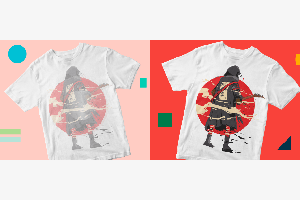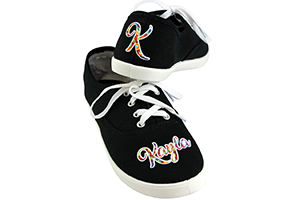September 7, 2016
In digital printing, output color is created by combining different percentages of a baseline set of inks. The most common printer color configuration is CMYK — cyan, magenta, yellow and black. With this ink combination, you can print a wide range of colors, typically in excess of 600,000 variations. (The actual number and color range is determined by the ink and printer capabilities.)
While this sounds like a palette of unlimited artistic opportunities, one ink set doesn’t work for all needs.
For everyday jobs, such as apparel, personalization, promotional products, signs, etc., CMYK usually is sufficient, as it provides a wide range of vivid color not only for graphics, but also for photography. In fact, with output resolutions as high as 1,200 dpi x 1,200 dpi, the results can be spectacular.
However, some shops need more focused options to deliver specific colors for specific applications. For example, many corporate, event and team logos require exact color matches when it comes to reproduction. They may provide PMS or RGB color codes, expecting them to automatically generate the exact color required by the graphic. However, that is not the case and the sublimator must use a process called spot-color matching that fine-tunes printer output colors so they match the input colors.
This process can be daunting because color changes as it moves through the system from an electronic file to a printed image. The ink, printer, paper and substrate influence the final color. Though color-management programs are designed to help compensate for these variables, it still takes work to deliver the proper output.
Photo Finish
Some sublimators focus more on photographs than graphics and have much different needs in terms of sublimation inks. They are challenged to reproduce fine details, shadows and complex colors, such as those found in skin tones.
Thus, it’s critical to deliver a true-to-life photographic image on the final product to satisfy customer expectations. Pro-photo products are lucrative, but the demands are high. The ink set must deliver the required image quality or there will be no opportunities for a long-term business relationship.
Fortunately, there are specialized sublimation inks designed to help fulfill specific printing needs. Rather than trying to make the basic CMYK ink set work outside its boundaries, you can use specific ink sets to deliver the images you need to produce. This will depend on your system. Inks are created with specific printers in mind, so the printer’s characteristics must be addressed when an ink manufacturer creates a new ink set.
Contact your equipment supplier to learn about the available inks for your system. Let’s review some of the newest options and how they can benefit your operation, with the caveat that ink sets mentioned may not be available for all printers.
The Basics
To print color with a four-color CMYK printer, those four inks must be installed. Changing even one of them will affect all of your images and probably prevent you from achieving anything close to the correct color output. So you are restricted to only those four colors.
However, an eight-color printer gives you the option of using eight base colors, which suddenly presents multiple options for specialized color output. As long as you have the basic CMYK setup, the other four inks simply provide more output color combinations without limiting your ability to produce everyday images, both graphic and photographic. The result is a wider gamut than found with standard, four-color printing.
As an example, a traditional eight-color configuration designed for HD Pro-Photo would look like this: C, M, Y and K, plus Lc (light cyan), Lm (light magenta), Lk (light black) and Llk (light light black). Multiple black inks allows more control over that color, which can be difficult to accurately print due to all the different versions that are essential for both photography and graphics.
Grays also are improved. The Lc and Lm help with enhanced skin tones, resulting in an ideal combination for producing high-quality photographic images. Plus, the added colors help with color matching. In addition, another ink set exists on the market that is compatible with photo panels (see “The XF Ink Factor”).
These inks are ideal for sublimators who mainly focus on producing high-quality photographic images, though they also deliver stunning graphics.
Specialty Inks
Specialy sublimation ink sets exist for operations focusing primarily on graphics and color matching.
Graphics often require expanded gamuts that deliver a more unique set of ink colors. For example, oranges and reds can be hard to accurately match with standard CMYK printing. In addition, some blues and purples are on the outer fringes of the true CMYK gamut. Pantone colors are tricky as well.
Expanded-gamut inks can help with that. For example, the Subli-Jet-HD XG ink replaces the light blacks with orange and blue colors, thus improving reds, oranges, blues and purples, which is ideal for color-critical applications such as sports and corporate logos.
Fluorescents are another burgeoning area for specialty sublimation inks. Traditionally, it has been difficult to create these colors for sublimation, as the luminous properties associated with them call for specific colors that fall outside the scope of standard CMYK inks, and even eight-color ink sets.
In the case of an eight-color ink, the two light black inks are replaced with fluorescent pink and fluorescent yellow. This enables users to add a wide range of fluorescent spot colors to images or produce completely fluorescent images for special effects not possible with a CMYK-only solution. It also opens the door to a variety of special applications, such as promotional, safety and high-visibility products.
These specialty sublimation inks are examples of how technology within the decorating discipline continues to expand. Though not every ink is available for every printer, stay abreast of what your suppliers offer. If you want to purchase new sublimation equipment, look beyond the image size and print speed, and focus on the available ink sets and how they can benefit your operation. More color options yield more sublimation opportunities, which lead to increased profitability and business growth.
You can learn more about specialty
ink sets by visiting sublimation dealers at the upcoming Imprinted Sportswear Shows event in Fort Worth, Texas, to be held Oct. 6-8.
Award-winning author and international speaker Jimmy Lamb has more than 20 years of apparel decoration experience. He currently is manager of communications for Sawgrass Technologies, Charleston, S.C. For more information or to comment on this article, email Jimmy
at jlamb@sawgrassink.com.
April 12, 2023 | Sublimation
As you work toward becoming an experienced dye-sublimation apparel, general merch or customized promotional items decorator, you may come across one or more obstacles, like your transfers coming out blurry, dull or faded.
FULL STORY
June 1, 2022 | Sublimation
How many times have you wished that you could sublimate a product that wasn’t polymer-based or polymer-coated.
FULL STORY
October 8, 2021 | Sublimation
I think the philosophy of lagniappe should be taught at every school and practiced by every business. A French word meaning “unexpected extra gift,” lagniappe often is used in Louisiana. In fact, sublimation decoration is a fantastic example of this.
FULL STORY




